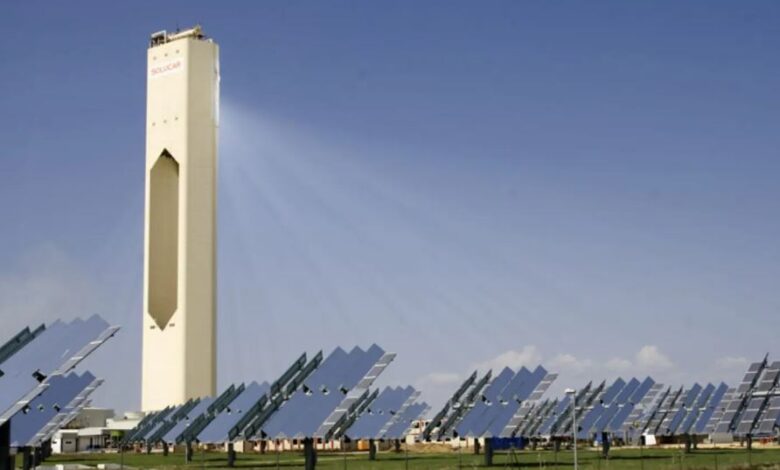HybridKraft: thermodynamic solar power plants integrated with photovoltaic

Tested an electric heater for molten salts
Is it possible to use solar energy, a non-programmable source par excellence, to achieve stable, efficient and always available energy production? The answer is yes and one of the ways to do it is through solar thermodynamics or CSP (Concentrated Solar Power). On paper, these plants can generate clean electricity on demand both day and night, but also be incorporated into industrial sites to provide steam to production cycles. In practice, however, they still present several problems both because CSP technology is extremely expensive, and because it is not easy to maintain the right temperature to the heat transfer fluid. A solution could come from the integration of concentrated solar power plants with photovoltaics.
The German HybridKraft project, led by John Cockerill, Frenell and BASF New Business, and the Fraunhofer ISE research institute, are working on this option. The initiative, funded by the Federal Ministry of Economy and Climate Protection, is building an electric heater that uses excess photovoltaic energy to keep molten salts at optimal temperatures.
Thermodynamic solar power plants, the technological challenge
Thermodynamic solar power plants, whether they are central tower plants, linear parabolic collectors or linear collectors of Fresnel, all follow a basic scheme. They use lenses and mirrors to concentrate the sun’s rays on a receiver and heat the heat transfer fluid flowing through it at high temperatures. This fluid (molten salts, diathermic oils, steam/water or supercritical CO2) is then accumulated or directed to the steam generator to which the heat is transferred. The steam produced in turn drives a turboalternator that produces electricity.
Several factors affect the performance of these plants, but two in particular have a preponderant weight: the temperature reached in the receiver (the higher, the higher the performance of the plant) and the reduction of convective thermal losses. Temperature side the best results currently are obtained with molten salts, economic elements, non-toxic and with limited environmental impact. Depending on the mixture used, it is possible to increase the operating process temperatures to 450-550 ºC. The problem? Generally below 270 ºC the molten salts become too viscous to flow in the SPC circuit; below 250 ºC, they solidify making the plant unusable. The most direct solution is to identify mixtures with a much lower solidification point, obviously improving the thermal insulation of the storage system. But in addition you can also provide systems that increase the output temperature of the fluid.
HybridKraft’s solar thermal-photovoltaic power plants
The HybridKraft consortium is working to improve the design and performance of an integrated hybrid CSP and FV power plant at both component and system integration levels. In detail, it is realizing an electric heater suitable for thermal powers from 50 to 100 MWth, which uses excess photovoltaic energy to heat the molten salt of the thermodynamic solar power plant. John Cockerill technicians with the support of the Fraunhofer ISE scientists have already developed a prototype with a size of 1 MWth, which will now be tested in a new test facility of the German Institute. Based on the results and simulations, a large-capacity electric heater project will then be developed to be studied in combination with Fresnel manifolds.
Basic Fresnel thermal collectors that use molten salt directly into the absorber tube can provide heat up to 545 Celsius. But with the help of photovoltaic energy and heater, the output temperature of the heat transfer fluid can be optimized. “We can use it to increase the storage density of molten salt and the operating temperature of the turbine, and thus the efficiency of the system,” explains project manager Shahab Rohani of the Fraunhofer ISE. “But we can also reduce the production costs of the CSP by optimizing the field size of the Fresnel collector based on the heat input from the electric heater”.
SP technology, the costs
Over the last decade, the cost of electricity produced by CSPs has fallen by more than 50% thanks to more efficient systems and the wider use of thermal energy storage. But the values remain high. According to a recent study, the level cost of electricity (LCOE) of solar thermodynamic solar tower plants is around 0.14 $/kWh, that of linear parabolic collectors at 0.17 U$/kWh, those with Fresnel collectors at 0.14 $/kWh. One of the industry’s major goals is to achieve a LCOE of $0.05/kWh for baseload plants with at least 12 hours of thermal energy storage.
read also Solar panels in space, wireless photovoltaic is in orbit and works
A road that would seem viable thanks to the integration with photovoltaics. A recent study by Fraunhofer Chile Research calculated that a PV-CSP hybrid power plant with thermal energy storage would be able to replicate the flexibility of gas-fired power plants to an LCOE of $0.053/kWh.





